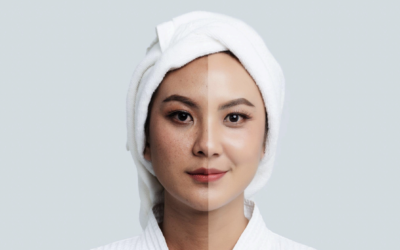
Skin hyperpigmentation is a common dermatological condition characterized by darkened patches of skin. It occurs when excess melanin, the pigment responsible for skin color, forms deposits in the epidermis and sometimes in the upper dermis. While hyperpigmentation is typically harmless, it can be a source of cosmetic concern and
anxiety for many individuals.
But, just as you can fix discoloration in your teeth with dental veneers, there may also be cosmetic options to prevent hyperpigmentation in your skin.
Understanding the causes and preventive measures can help manage and even reduce the occurrence of these dark spots.
In this article, we’ll explore what causes hyperpigmentation and suggest some tips to prevent or
improve it.
Understanding the underlying causes of skin hyperpigmentation is essential for effective prevention and treatment. Here are some of the most common factors that contribute to this condition:
Sun exposure. One of the most common causes of hyperpigmentation is prolonged exposure to the sun. Ultraviolet (UV) rays trigger the production of melanin as a defense mechanism to protect the skin from damage. Over time, this can lead to sunspots or solar lentigines, particularly on areas frequently exposed to sunlight, such as the face, hands, and arms.
Hormonal changes. Hormonal fluctuations, especially those related to pregnancy, birth control pills, or hormone replacement therapy, can lead to a type of hyperpigmentation known as melasma. This condition often appears as dark, symmetrical patches on the face and is more prevalent in women.
Post-inflammatory hyperpigmentation (PIH). Any skin injury or inflammation, such as acne, eczema, or psoriasis, can lead to PIH. For example, kitchen fire statistics show us how easily they can start in the home, and more than half of people who experience burn injuries,
particularly those with a dark complexion, develop hyperpigmentation at the burn site. As the skin heals, it may produce excess melanin, resulting in darkened areas. This type of hyperpigmentation is particularly common among individuals with darker skin tones.
Medical conditions and medications. Certain medical conditions, such as Addison’s disease or hemochromatosis, can cause hyperpigmentation. Additionally, some medications, including chemotherapy drugs, antibiotics, and antimalarials, may have side effects that include skin darkening.
Genetics. Genetic predisposition also plays a role in the likelihood of developing hyperpigmentation. Individuals with a family history of hyperpigmentation disorders are more susceptible to developing these conditions.
Recognizing these causes can help you take proactive steps to manage and prevent skin hyperpigmentation.
Preventing hyperpigmentation involves a combination of lifestyle adjustments, skincare routines, and medical interventions.
Here are some effective strategies:
Incorporating these preventive measures into your daily routine can significantly reduce the risk of developing skin hyperpigmentation. By adopting sun protection, a consistent skincare regimen, medical treatments when necessary, and healthy lifestyle choices, you can maintain a clear and even-toned complexion.
Hyperpigmentation is a multifaceted condition influenced by various factors, including sun exposure, hormonal changes, and skin injuries. Preventing hyperpigmentation requires diligent sun protection, a thoughtful skincare routine, and, when necessary, medical treatments.
By understanding the causes and taking proactive steps, individuals can effectively manage and prevent the occurrence of hyperpigmented patches, leading to healthier, more even-toned skin.
Implementing these strategies not only helps in the prevention of hyperpigmentation but also promotes overall skin health, ensuring a radiant and even complexion.